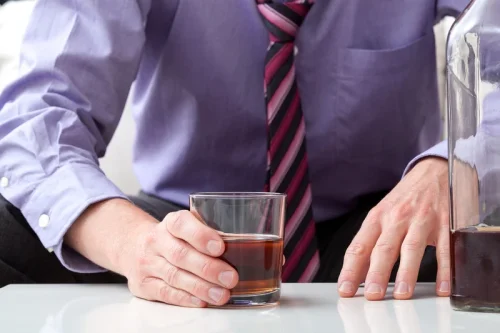
The major routes of administration of cocaine are inhaling (or snorting), injecting, and smoking. There is great risk regardless of the method of use, and it is possible to overdose fatally. Compulsive cocaine use may develop even more rapidly if the substance is smoked rather than snorted. Smoking allows extremely high doses of cocaine to reach the brain very quickly and brings an intense and immediate high. The injecting drug user is at risk for acquiring or transmitting HIV/AIDS as well as hepatitis C if needles or other injection equipment are shared. cocaine addiction treatment is a complex disease, with physical, mental, social, environmental, and familial factors.
- According to the National Institute on Drug Abuse, around 68% of people seeking cocaine treatment regularly use crack cocaine.
- If a person uses cocaine, they may develop substance use disorder.
- Cocaine — aka coke, blow, and snow — is a powerful stimulant made from the leaves of the coca plant.
Cognitive-behavioral therapy (CBT)
When you heat the rock crystal and breathe the smoke into your lungs, you get a high that’s almost as fast and strong as when you inject it. Following initial treatment, some people are transferred to a drug-free therapeutic community (TC) for six to 18 months to reinforce coping skills in a community atmosphere. For a person to be diagnosed with stimulant use disorder, they must be more than just a user. For this diagnosis, a person must meet at least two of 11 criteria outlined in the DSM-5 within the previous 12 months. If you’re also addicted to these or any other substances, you should be offered specialised help with this too. Cocaine Anonymous offers a recovery solution for anyone who has a problem with drug or alcohol misuse.

Substance Use Disorder
If you do start using the drug, it’s likely you’ll lose control over its use again — even if you’ve had treatment and you haven’t used the drug for some time. The best way to prevent an addiction to a drug is not to take the drug at all. If your health care provider prescribes a drug with the potential for addiction, use care when taking the drug and follow instructions. Sometimes called the « opioid epidemic, » addiction to opioid prescription pain medicines has reached an alarming rate across the United States.
Short and Long-Term Effects of Cocaine Use and Addiction

Cocaine withdrawal can sometimes have severe symptoms, but many detox programs exist to help you through it. Only a qualified medical professional can diagnose someone with a stimulant use disorder, but it can be helpful to understand some of the observable diagnostic criteria so you know when it might be time to reach out. Animal research suggests the orbitofrontal cortex sustains some level of damage over long periods of cocaine use.
Risk Factors
- They occur in the limbic system, the primary site for cocaine effects, and are sufficiently fundamental and long-lasting to contribute significantly to the transition from drug abuse to addiction.
- Many people don’t understand why or how other people become addicted to drugs.
- Cocaine’s effects appear almost immediately after a single dose and typically disappear within a few minutes to an hour.
- If you’re addicted to alcohol as well as cocaine, you may be prescribed Antabuse (disulfiram).
- As many as 1,800 Americans experiment with cocaine for the first time each day.
Both inpatient and outpatient programs are an effective way to quit substances like cocaine and find long-term support for recovery from substance use disorder. Someone who’s dependent on cocaine, for example, will experience https://ecosoberhouse.com/ withdrawal symptoms when attempting to quit using the drug. Detoxification, or detox, refers to these withdrawal symptoms, as well as the medical interventions that can help assist someone who’s in withdrawal.
Cocaine Addiction Side Effects, Symptoms, Withdrawal, and Treatment
This means they may find it difficult to manage their use of cocaine and may experience addiction in the most severe cases of SUD. It may be done by family and friends in consultation with a health care provider or mental health professional such as a licensed alcohol and drug counselor, or directed by an intervention professional. It involves family and friends and sometimes co-workers, clergy or others who care about the person struggling with addiction. As time passes, you may need larger doses of the drug to get high. As your drug use increases, you may find that it’s increasingly difficult to go without the drug. Attempts to stop drug use may cause intense cravings and make you feel physically ill.
- Though ongoing research efforts are refining the extent and application of these modalities (eg, computer-assisted methods like CBT4CBT),179 there remains a need for greater dissemination and implementation of both CM and CBT-SUD for CUD.
- The development of novel and efficacious treatments for CUD has been an area of intense research over the past 3 decades.
- Impressively, the group who received ketamine and therapy had higher rates of abstinence even at a 6-month follow-up.
- The majority of people treated for a powder cocaine addiction remain drug free.
- Cocaine and alcohol are frequently used together, to the point where alcohol can be a trigger for recovering cocaine users.
- This includes the possibility of providing different medications to men and women.
- Other solutions to help overcome cocaine addiction include exercise, hypnosis, acupuncture, and herbs.
Sex-Specific Treatments
The identification of underlying biological mechanisms has been crucial for all major advances in treatment of other medical disorders, and there is no reason to think addiction will be any different. Scientists currently are working to identify which specific genes ΔFosB stimulates to produce its effects. Comparisons of genes expressed in NAc nerve cells in mice that make ΔFosB versus mice that lack the transcription factor have revealed more than a hundred ΔFosB-mediated changes in gene expression (McClung and Nestler, 2003).

- Adrienne Santos-Longhurst is a freelance writer and author who has written extensively on all things health and lifestyle for more than a decade.
- When alcohol is combined with cocaine, the two substances can lead to the production of cocaethylene, which can be damaging to the heart.
- We strive to create content that is clear, concise, and easy to understand.
- If you or a loved one is addicted to cocaine, reach out to a doctor, or someone else you trust who may be able help you explore treatment options and find other sources of support.
- You might receive treatment with a pharmaceutical drug if you have a co-addiction that can be treated pharmacologically, such as an addiction to alcohol or opioids.
The risk of addiction is even higher with crack cocaine because its effects are more immediate and more intense. Cocaine has been found to trigger chaotic heart rhythms called ventricular fibrillation, accelerate heartbeat and breathing, and increase blood pressure and body temperature. Physical symptoms may include chest pain, nausea, blurred vision, fever, muscle spasms, convulsions, coma, and death.